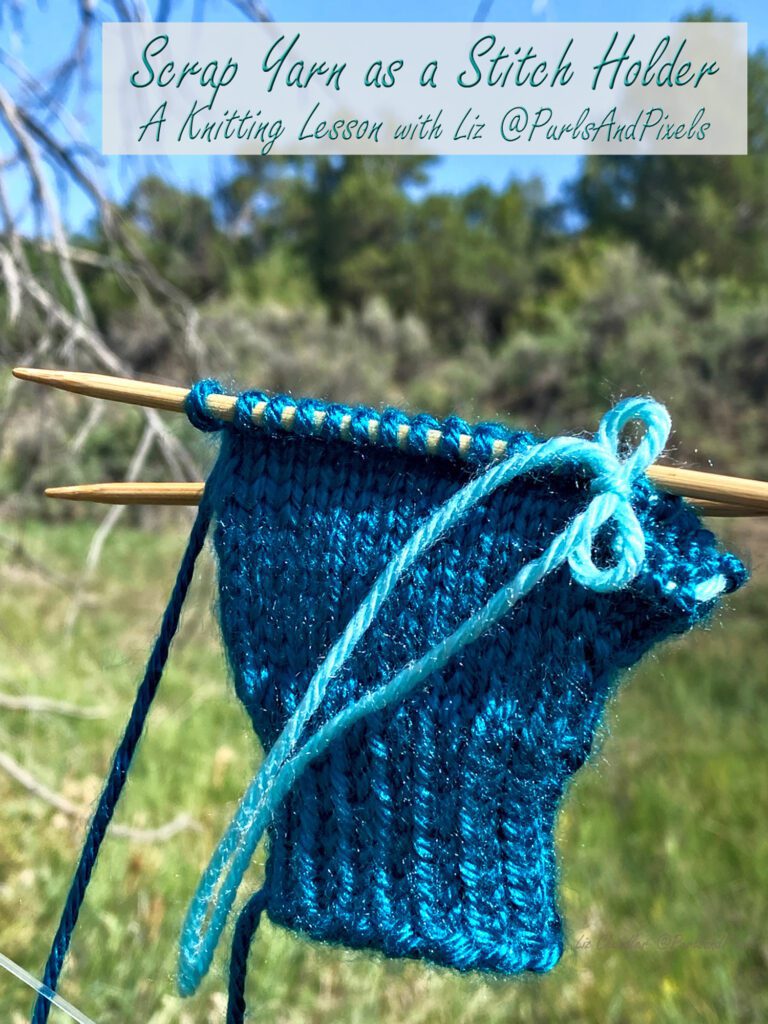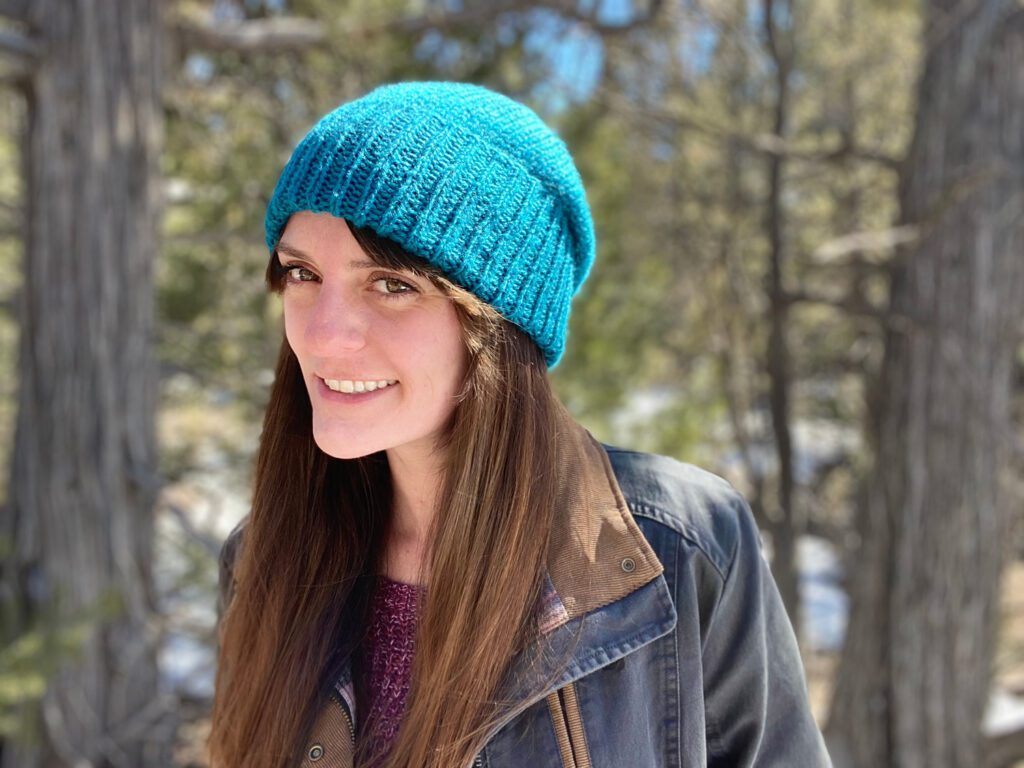
If you need to use a stitch holder, but do not have one available, you can substitute a strand of scrap yarn. Using a darning needle, thread a bit of yarn through live stitches that need to be kept workable for later. Tie a small knot in the scrap yarn to keep it in place and it will hold your stitches until you are ready to knit them again.
Below you will find both video and written guides to help you learn how to substitute yarn for a stitch holder. Or, learn to use a stitch holder at this link.
Video Guide: How to Use Scrap Yarn Instead of Stitch Holders
Written Guides: How to Use Scrap Yarn Instead of Stitch Holders

Scrap Yarn as Stitch Holder, Step 1:
Thread a scrap of yarn that is at least 12 inches long onto a darning needle. Place the working yarn behind the knitting needles. Let go of the righthand needle and pick up the darning needle with your right hand.

Scrap Yarn as Stitch Holder, Step 2:
Insert the tip of the darning needle into the front leg of the next live stitch from back to front (as if to purl).

Scrap Yarn as Stitch Holder, Step 4:
Slip all the stitches your pattern instructs onto the darning needle and scrap yarn in the same manner.

Scrap Yarn as Stitch Holder, Step 5:
Pull the darning needle and scrap yarn through the stitches, so the stitches sit on the yarn. Ensure you do not allow the stitches to drop off the scrap of yarn.

Scrap Yarn as Stitch Holder, Step 7:
Tie a knot or bow in with the ends of the scrap yarn, which can be undone later.

Practice With My Knitting Patterns
Ready to try it?

Try knitting Simple Fingerless Gloves to practice using stitch holders to make thumbs.

In my pattern for Basic Knit Mittens you will also separate the thumb and hand sections with a stitch holder.

Up Next

To finish off fingerless gloves and other round knits, you’ll need to learn how to bind off. In the next lesson we will learn how to bind off when working in the Magic Loop.






















































































